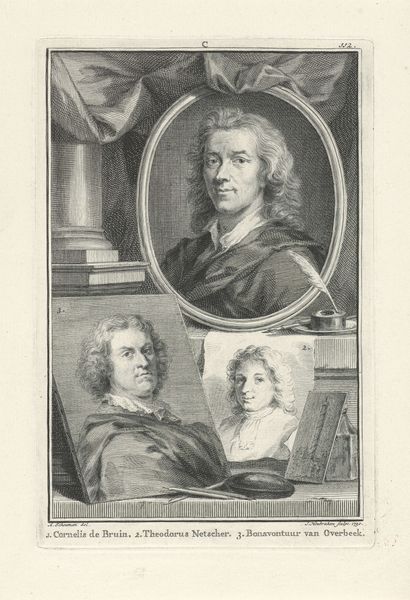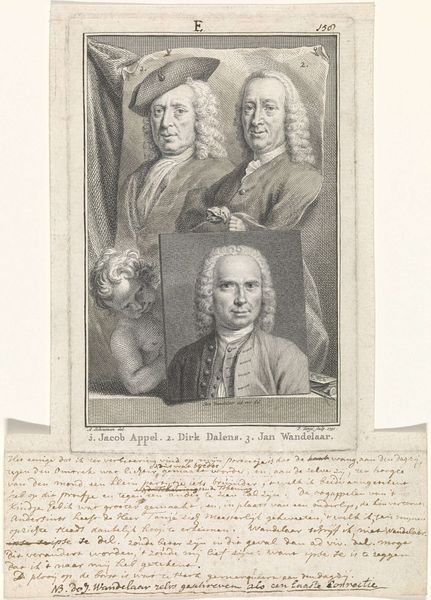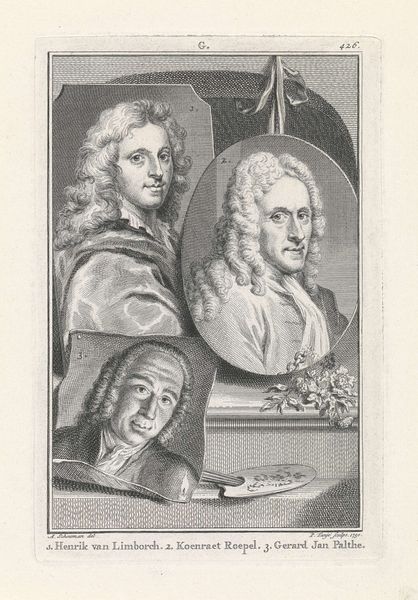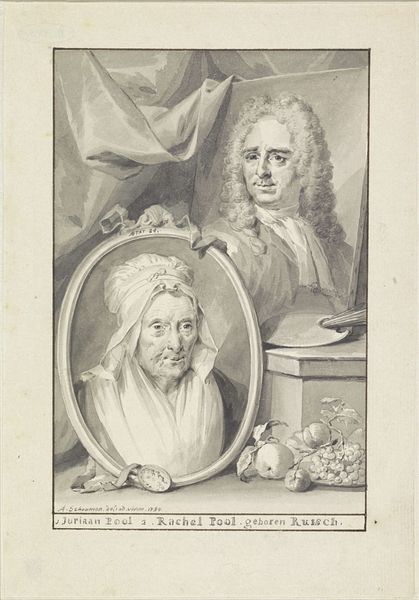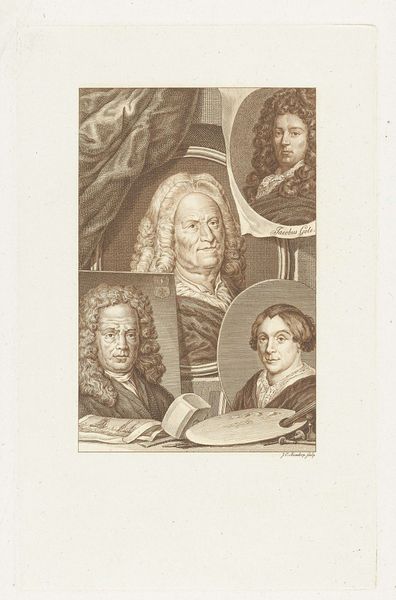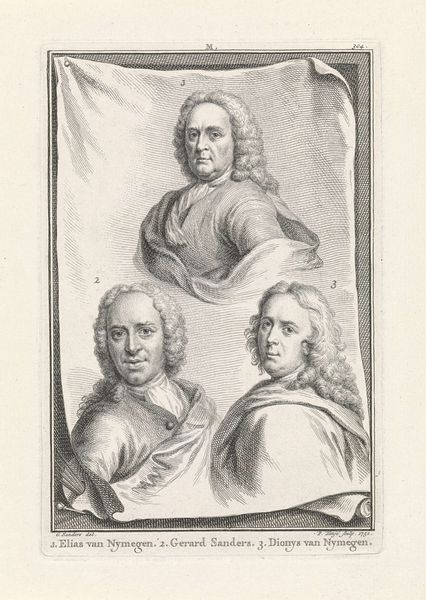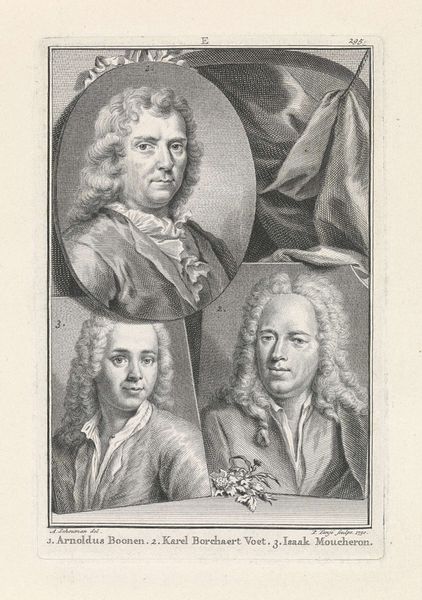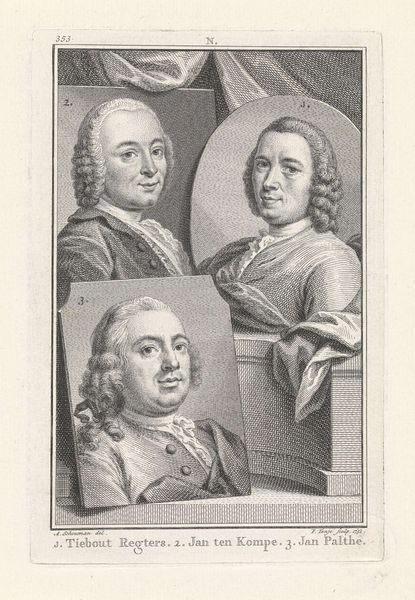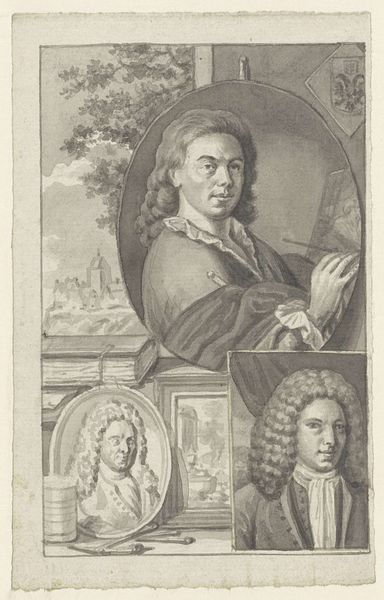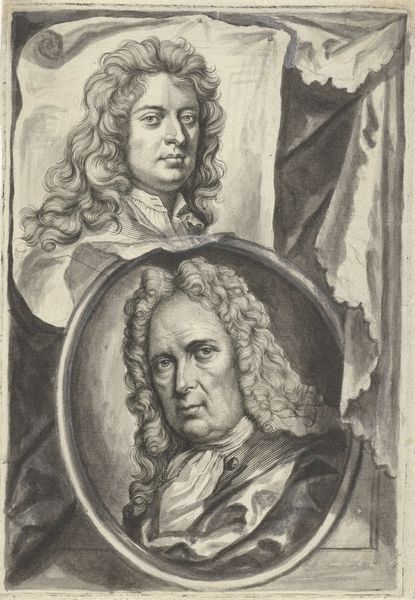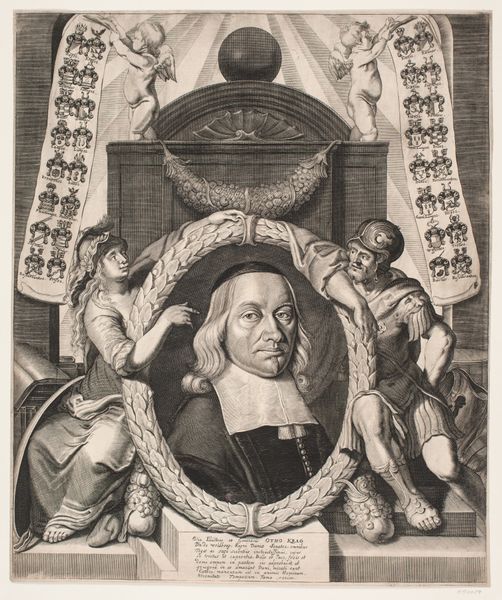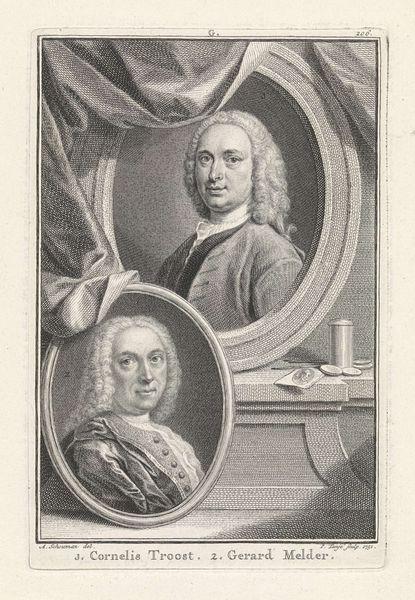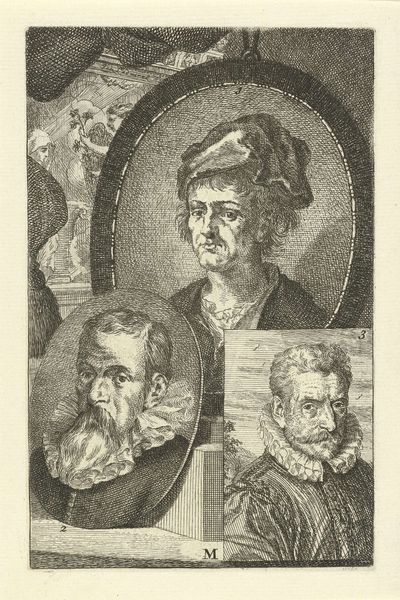
Portretten van Adriaan van der Burg, Cornelis Greenwood en Aert Schouman 1751
0:00
0:00
pietertanje
Rijksmuseum
print, engraving
#
portrait
#
pencil drawn
#
baroque
# print
#
pencil drawing
#
group-portraits
#
northern-renaissance
#
engraving
Dimensions: height 152 mm, width 100 mm
Copyright: Rijks Museum: Open Domain
Curator: Here we have a print from 1751, titled "Portretten van Adriaan van der Burg, Cornelis Greenwood en Aert Schouman," made by Pieter Tanjé, now in the Rijksmuseum. It depicts three men. Editor: It’s a really intriguing composition, isn't it? The rendering in monochrome lends a certain gravity. There is a striking formality despite its intimate scale. Curator: Indeed. The piece holds so much significance as a carefully constructed representation. We can see three portraitists, their likenesses, and the tools and works of their craft arranged in visual harmony. Their placement evokes status in hierarchy, from Adriaan van der Burg in the commanding oval, presiding over his counterparts. Editor: Absolutely, the subtle positioning definitely suggests a hierarchy, a ranking of importance or perhaps seniority in the artistic community. Do you think their placement tells a story about power dynamics within that society? The inclusion of a sketchbook hints at artistry but it also speaks to exclusivity, as art often reflected the perspectives of the wealthy at the time. Curator: I am compelled by its ability to function as a time capsule of visual language. The clothing, the hair, all these visual markers denote specific meaning and cultural relevance within the Northern European context of the period. I see in the folds of the draped cloth at the top a reflection of classical grandeur, like painted stage curtains. Editor: Exactly. The rendering and attention to detail can also be viewed through a political lens. By highlighting such subjects of affluence, these images uphold systemic elitism, which inevitably marginalises anyone who isn't considered within those strict visual parameters. These weren’t portraits for the people. Curator: Agreed. Looking at it through today’s eyes, it might appear exclusive, but stepping back to consider its original context, it serves as a signifier. Symbols create connections, they embody more than just surfaces—they tell stories, create continuity. Editor: Still, let's be critical, right? It's an incredibly layered representation of a specific time and place, rife with power structures but simultaneously impressive in the skill it showcases, if we acknowledge the layers embedded within that artistic expression. Curator: An acknowledgment, a starting point, I think. Understanding those structures helps us to look critically and to understand what has stayed the same, or what we still need to overturn. Editor: Absolutely. I appreciate having the opportunity to unravel these stories and to hold it to the light, while interrogating what that light illuminates, and what it chooses to ignore.
Comments
No comments
Be the first to comment and join the conversation on the ultimate creative platform.
